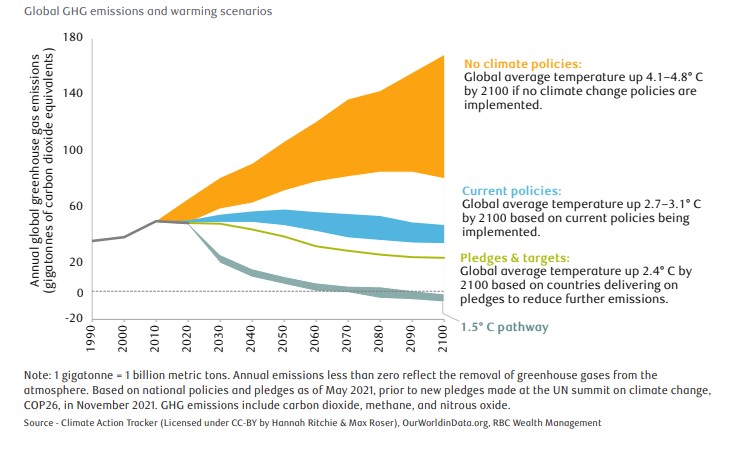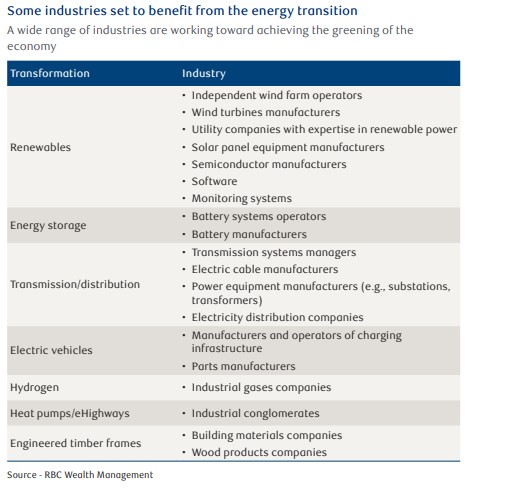The term “net zero” is a common term used today, however, it was practically unheard of over a decade ago. Today we’re seeing countries around the world making commitments to reach “net zero”, but what does that mean? Net zero is considered a state at which the amount of greenhouse gas emissions (GHG) added into the atmosphere is balanced out by the amount being removed. The expression was first used in scientific literature and has since been swiftly adopted by public policy and is now a mainstream phrase. The Intergovernmental Panel on Climate Change (IPCC) report in 2018 used this expression when calling for the capping of global temperatures to below 1.5 degrees Celsius above pre-industrial average temperatures to avoid the worsening effects of climate change such as extreme weather and a rise in sea levels. Despite this, temperatures today are already one degree Celsius above pre-industrial levels and continue to rise. The IPCC estimates that global carbon dioxide must fall by about 45% by 2030 and reach net zero by 2050 in order to meet this temperature target. The result is countries scrambling to set climate targets—Canada, the US, UK, and European Union all having committed to reaching net zero by 2050; China targets 2060; and some nations have made these commitments legally binding. Thousands of companies have similarly declared their intentions to meet similar targets.

While it would be great if efforts to reduce anthropogenic carbon dioxide through renewable energy and ‘green’ hydrogen would counteract all emissions, some emissions are simply unavoidable with present-day technology. Aviation and farming, for one, are far from reaching zero emissions. By other means, emissions must be removed from the atmosphere through carbon capture or nature-based solutions such as tree planting. Regardless, scientists and engineers continue to seek viable options in all industries. The future will look very different than today, with expected wholesale changes to our homes, transportation methods, and landscape evolution.
Decarbonized Homes
In the near future, we may see decarbonized homes. Homes could receive 95 % of their electricity from renewable sources. Most fossil-fuel-powered furnaces and boilers may be replaced by heat pumps, electric devices that extract heat from their surroundings to warm fluid within that compresses the air and subsequently increases the temperature. Essentially, a heat pump operates in the opposite way of a refrigerator and likewise is refrigerator-sized. While nearly 20 million households purchased heat pumps in 2019 according to the International Energy Agency, the size and cost remain a deterring factor. Policy support will be needed to accelerate its adoption, as well as rebates and further innovation to shrink down these devices. Emerging technologies will reduce the amount of CO2 emitted from building materials, and new more environmentally friendly building materials will be used instead. Eventually, we will also be seeing roofs increasingly covered by solar panels or greenery.
Transformed Transport
Electric Vehicles (EV) are all that’s talked about these days when it comes to transportation. Its development is expected to be transformed into even more efficient and durable vehicles. New advancements could look like two-way charging points, where an EV may feed energy back to the grid, acting like an aggregated mega battery to offset potential inconsistencies in wind and solar power. Wireless charging technology may also be viable, with even the possibility to charge an EV battery while the vehicle itself is being driven.
Eventually, zero emission trains could become the norm as well. South Korea already operates multiple electric trains and intends to phase out all diesel passenger trains by 2029. Hydro-powered trains are also in development and are slowly being rolled out by companies such as Alstom and Canadian Pacific Railway.
In aviation, electric planes are not yet practical due to the enormous weight of the batteries. Still, companies such as Airbus are leading the way for innovation using hydrogen-fueled propulsion systems. With that said, producing hydrogen at a large-scale will be a challenge in its own right.
Reshaped Landscape
By 2050, the landscape may be drastically different with fields carpeted by wind turbines and solar panels, and mini forests within cities. Travelers may also begin to see electric motorways for trucks, with pilot programs already being tested in Sweden and Los Angeles.
Direct Air Capture (DAC) facilities will likely be built near the edges of urban areas, which will look like rows of boxes containing fans humming away. DAC removes CO2 from the atmosphere by forcing air over chemicals that can capture CO2, compressing, transferring, and storing the GHG within deep geological formations. Currently, the greatest problem with this technology, like many, is cost. The largest DAC facility operating today can remove 4,000 metric tons of CO2 from the air per year at $600-$800 per metric ton. Canada’s own Carbon Engineering argues that scaling up the technology can drive prices down. Furthermore, according to Carbon Engineering, DAC technology combined with secure geological storage can deliver permanent removal of CO2, and provide sectors struggling to decarbonize, such as aviation, shipping, and oil and gas, with a potential net-zero path. All that said, to reach net zero by 2050, DAC will need to be scaled up drastically, requiring immense support and grants from the government and public.
A cheaper alternative is natural carbon solutions like planting trees. Reforestation efforts have increased in recent years, with IPCC suggesting that increasing the total area of the world’s eco-regions can sufficiently store a large proportion of the atmospheric carbon necessary to limit the rise of global temperatures to below 1.5 degrees Celsius. The shift towards plant-based diets would also aid in freeing up to 20% of farmland for other uses. Planting trees may be the most cost-effective, but it is a slow process requiring immense plots of land. Moreover, trees can burn in wildfires, especially with increasing extreme temperatures, causing stored carbon to be released. Simply, reforestation can only be a small piece of the solution.
Can Net Zero Be Achieved?
Achieving net zero is an enormous task with an ineffable amount of challenges. The cost of investing in green infrastructure is enough to deter many. However, many investors see the risk of inaction could also be costly as continuing on the current pathway can lead to uninhabitable regions, negative health effects, and supply chain disruptions which magnify costs for businesses and governments. For this reason, investment capital in sustainable and renewable industries should continue to grow. Below we list a chart of industries set to benefit from this energy transition. Speak to your advisor on how to best access these investable themes, while also considering risk, valuation and time horizon.

